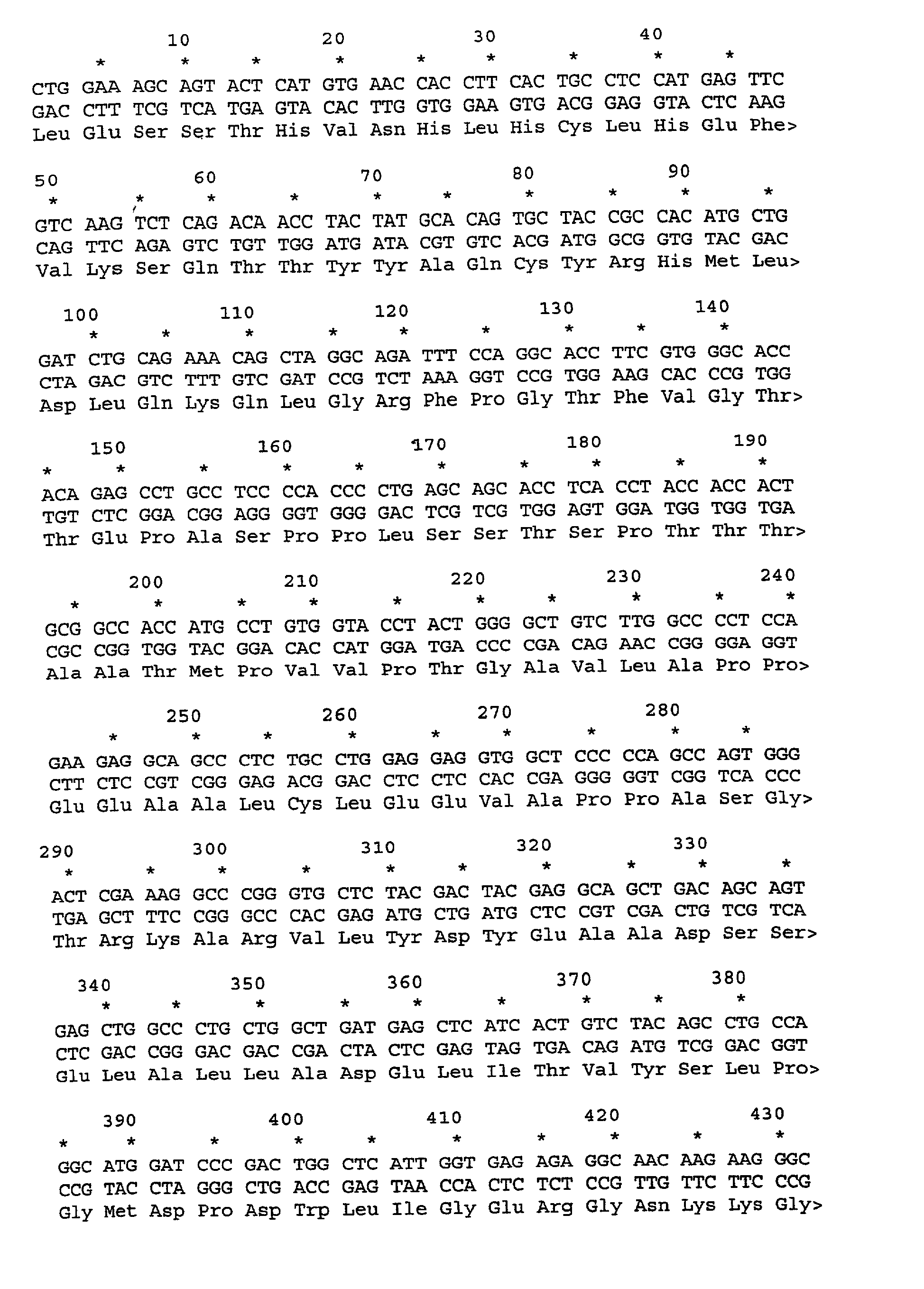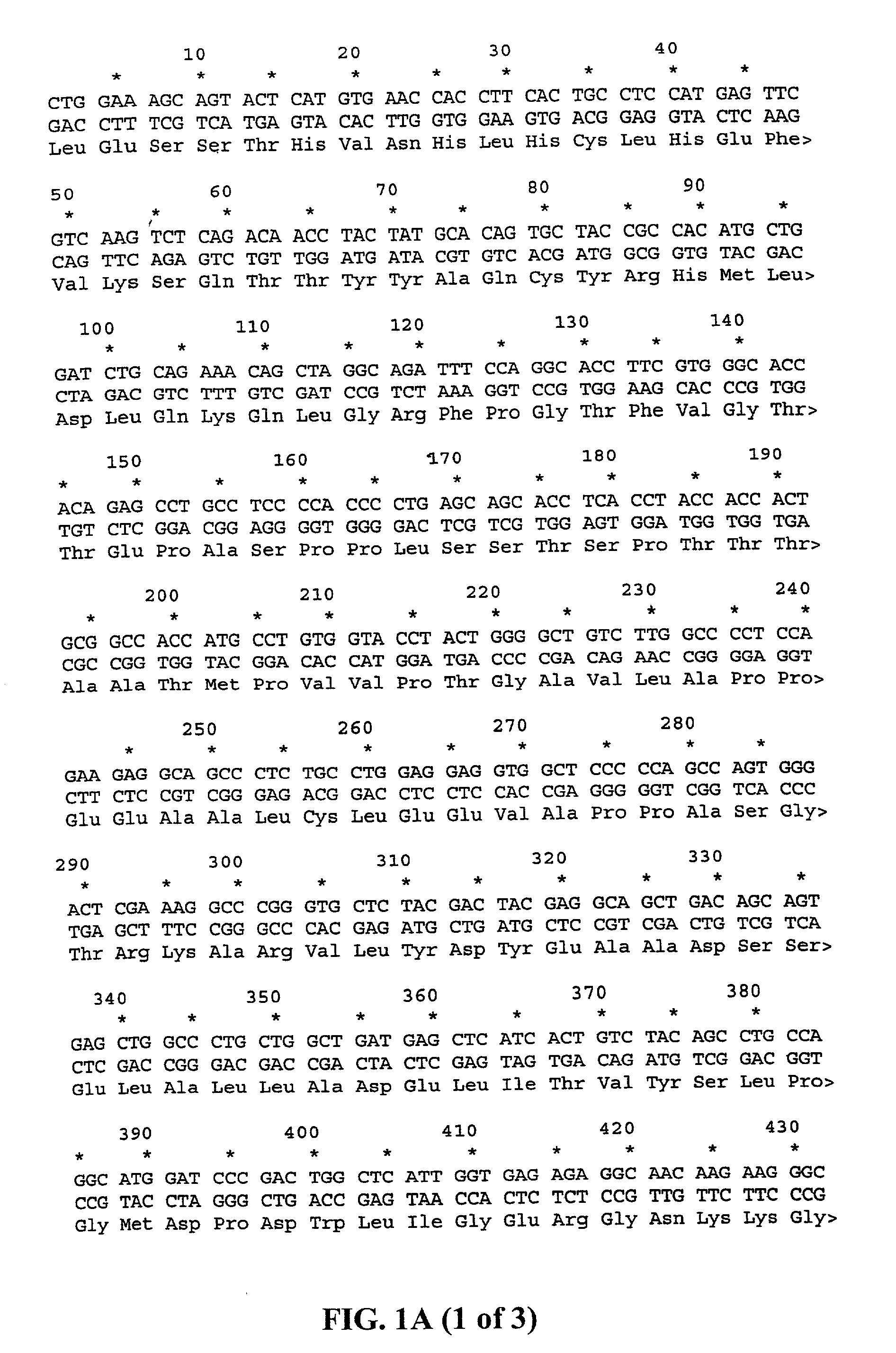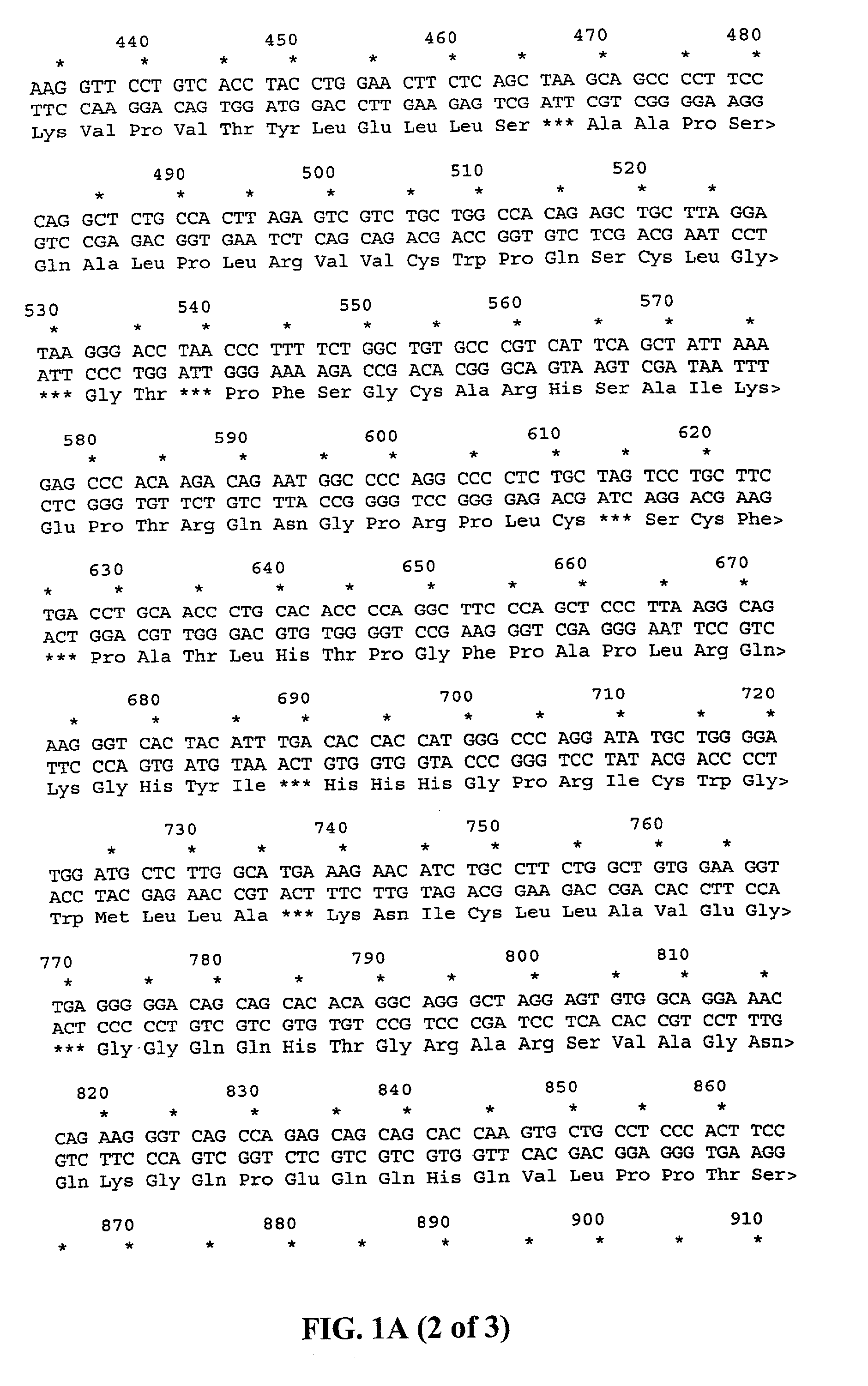SPAS-1 cancer antigen
- Summary
- Abstract
- Description
- Claims
- Application Information
AI Technical Summary
Problems solved by technology
Method used
Image
Examples
example 1
Generation of Anti-TRAMP T Cell Lines
[0202] Normal C57 / BL6 male mice were immunized with GMCSF-producing TRAMP-C2 cells and CTLA-4 according to standard protocols (see, for example, Kwon. et al., Proc. Nat. Acad. Sci., U.S.A., 1997, 94: 8099-8103; Kwon et al., 1999, Proc. Natl. Acad. Sci. U.S.A., 1999, 96: 15074-15079; and Hurwitz et al., 2000, Cancer Research 6: 2444-2448. Briefly, as shown in FIG. 2, three C57 / BL6 male mice were immunized subcutaneously with 2.times.10.sup.6 irradiated GMCSF-producing TRAMP-C2 cells on day 1. On days 3, 6 and 9, 100 .mu.g anti-CTLA-4 antibody (9H10) were injected intraperitonally in the same mice. On day 12, 26 and 54, the mice were re-immunized with 2.times.10.sup.6 irradiated GMCSF-producing TRAMP-C2 cells. 8 days later, the spleen and lymphnodes were harvested, pooled, and put in single cell suspension in 6 well plates at 20.times.10.sup.6 cells / well with 10.sup.6 MitomycinC-treated B7-expressing TRAMP-C2 cells as antigen-presenting cells and 5...
example 2
The T Cell Line is Specific for TRAMP Tumor
[0203] Normal C57 / BL6 male mice were immunized with GMCSF-producing TRAMP-C2 cells and CTLA-4 according to standard procedures described. T cells lines were generated by stimulating spleen and lymph node cells from immunized mice with B7-expressing TRAMP cells in vitro. These cells were propagated in vitro by standard techniques.
[0204] FACS analysis of the cell line showed the cells were uniformly CD8.sup.+, indicating that the cells were likely to be cytotoxic T lymphocytes and the target antigen a peptide restricted by Class I MHC molecules. The function and specificity of the T cells were assessed using standard assays for interferon .gamma. (IFN) production (A) and cytotoxicity (B) in response to incubation with a panel of syngeneic, C57BL / 6 derived tumors of different cellular origins. As shown in FIG. 3 in both assays the T cell line recognized only the TRAMP-C2 tumor line, and did not react with other tumors, including a melanoma (B1...
example 3
[0205] The CD8.sup.+ T cell line Recognizes Naturally Processed Tumor Peptides (NPTPs) from TRAMP prostate tumor but not thymoma cells
[0206] To determine the nature of the antigen detected by the T cell line, and to further examine specificity, peptides were eluted from TRAMP-C2 cells or from EL-4 thymoma cells by standard conditions. These peptides were then pulsed onto RMA-S cells, a cell line that does not express a critical peptide transporter and thus has on its surface empty MHC molecules that efficiently take up exogenously added peptide. Naturally Processed Tumor Peptides (NPTPs) were isolated by treating 10.sup.8 TRAMP-C2 and as a control 10.sup.8 EL-4 tumor cells with 4% TFA, pelleting the cell debris and passing the supernatant through a 10 kD-cutoff filter.
[0207] As shown in FIG. 4, naturally processed peptides (NPTPs) from TRAMP-C2, but not EL-4 cells, sensitized RMA-S cells to lysis. This indicates the specificity of the T cell line for TRAMP-C2 peptides.
PUM
| Property | Measurement | Unit |
|---|---|---|
| Fraction | aaaaa | aaaaa |
| Immunogenicity | aaaaa | aaaaa |
| Fluorescence | aaaaa | aaaaa |
Abstract
Description
Claims
Application Information
 Login to View More
Login to View More - R&D
- Intellectual Property
- Life Sciences
- Materials
- Tech Scout
- Unparalleled Data Quality
- Higher Quality Content
- 60% Fewer Hallucinations
Browse by: Latest US Patents, China's latest patents, Technical Efficacy Thesaurus, Application Domain, Technology Topic, Popular Technical Reports.
© 2025 PatSnap. All rights reserved.Legal|Privacy policy|Modern Slavery Act Transparency Statement|Sitemap|About US| Contact US: help@patsnap.com



